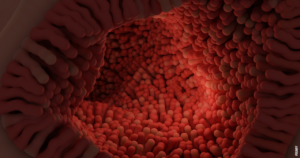Unveiling the Secrets of Auditory Nerve Damage
The auditory nerve is a vital component of our hearing system, responsible for transmitting sound signals from the inner ear to the brain. When this nerve becomes damaged, it can lead to significant hearing loss and related complications. Diagnosing auditory nerve damage is a complex process that requires specialized tests and expertise. In this article, we will delve into the fascinating world of auditory nerve diagnostics, exploring the methods used to uncover this hidden impairment.
1. Audiometry: The Gateway to Hearing Assessment
Audiometry is the first step in diagnosing auditory nerve damage. This comprehensive hearing assessment measures an individual’s ability to hear sounds of different frequencies and intensities. By presenting a range of tones and gauging the patient’s responses, audiologists can identify the extent and nature of any hearing loss.
2. Otoacoustic Emissions (OAE) Testing: A Window into the Inner Ear
Otoacoustic emissions (OAE) testing is a non-invasive procedure that provides valuable insights into the health of the auditory nerve and the inner ear. By playing soft sounds into the ear and measuring the echoes produced by the inner ear’s hair cells, clinicians can assess the integrity of the auditory nerve. This test is particularly useful in diagnosing auditory nerve damage in infants and young children.
3. Auditory Brainstem Response (ABR) Testing: Unlocking the Brain’s Response
Auditory brainstem response (ABR) testing is a specialized procedure that examines the brain’s response to sound stimuli. Small electrodes are placed on the scalp to measure the electrical activity generated by the auditory nerve and other auditory pathways. By analyzing these electrical signals, audiologists can assess the functionality of the auditory nerve and detect any abnormalities.
4. Magnetic Resonance Imaging (MRI): Peering Inside the Ear
In some cases, auditory nerve damage may be caused by structural abnormalities or tumors. Magnetic resonance imaging (MRI) can be used to visualize the inner ear and surrounding structures, providing valuable information to aid in diagnosis. By capturing detailed images, radiologists can identify any anatomical issues that may be affecting the auditory nerve.
Post
Post
5. Vestibular Evoked Myogenic Potential (VEMP) Testing: Assessing Balance and Hearing
The auditory nerve and the vestibular system, responsible for balance, are closely connected. Damage to the auditory nerve can sometimes result in balance problems. Vestibular evoked myogenic potential (VEMP) testing evaluates the functioning of the vestibular system by measuring muscle responses in the neck and eyes. This test can help identify any underlying auditory nerve damage that may be affecting both hearing and balance.
From the initial audiometry test to sophisticated imaging techniques, diagnosing auditory nerve damage requires a multi-faceted approach. By combining various diagnostic methods, healthcare professionals can accurately identify the presence and extent of auditory nerve damage, allowing for targeted treatment and rehabilitation strategies. Understanding the intricate workings of the auditory nerve and the diagnostic techniques used to unravel its mysteries brings us one step closer to preserving and restoring the precious gift of hearing.



